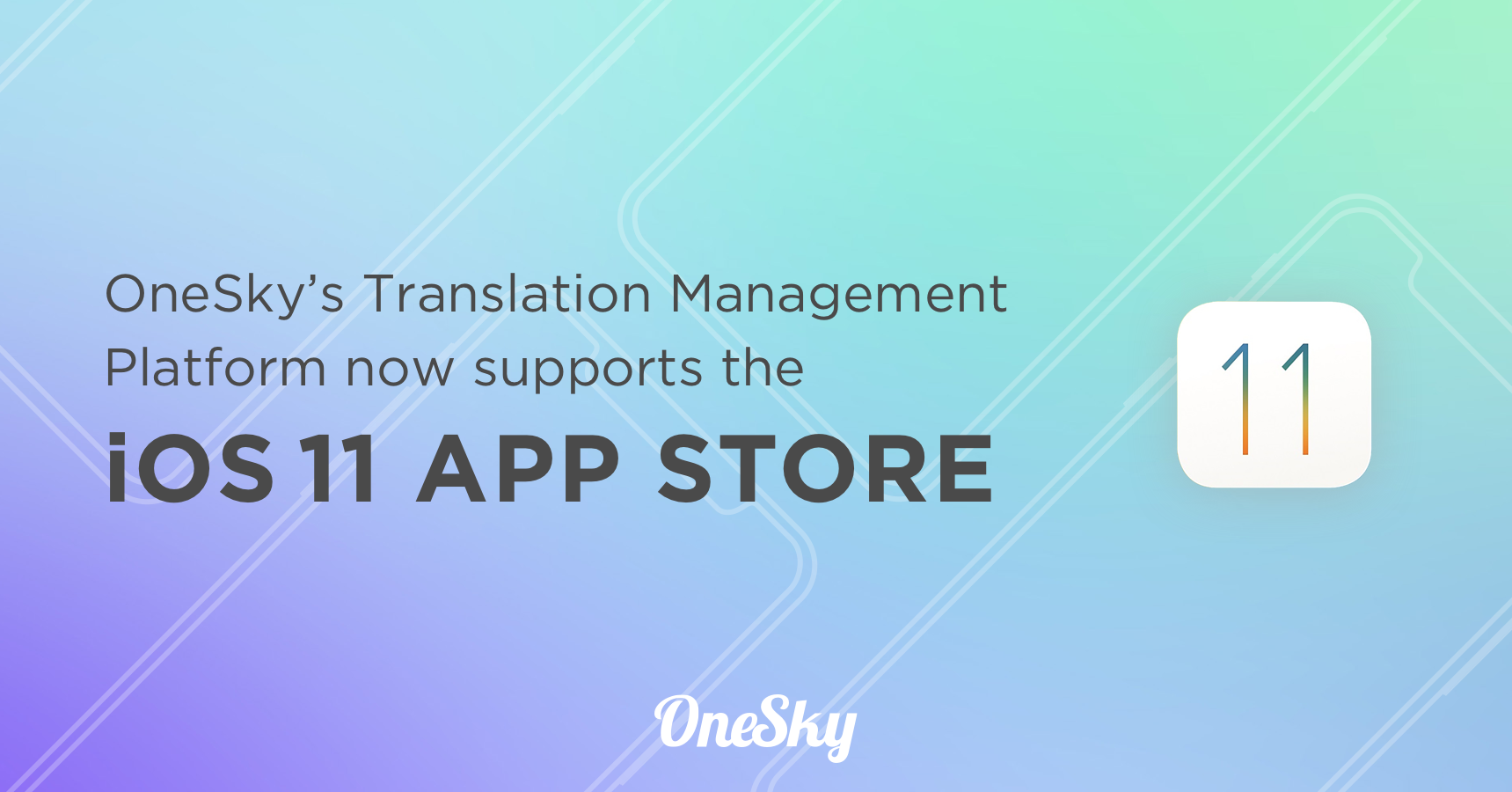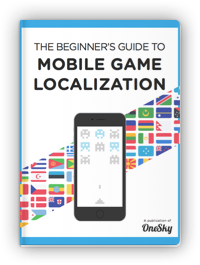Global App Store Optimization: High ROI Mobile App Marketing
Many People Forget that App Stores Are Worldwide
When more than 60% of consumers find apps via app store search, high visibility in app store search results is a key to success.
While everybody knows about the importance of App Store Optimization (ASO), many developers neglect a simple fact — app stores are not only local but also global distribution channels. Right now, the two largest app stores in the world, the iTunes App Store and Google Play, are available in over 130 countries and support over 30 languages (Much to our excitement, OneSky just became a recognized 3rd party localization vendor by Apple). Imagine what would happen if your app ranked #1 in every single app store in the world. Irresistible, right? In this post, we’ll show you how to master the process of global app store optimization.
Global ASO: Cheap and Fast, with a Huge ROI
Global app store optimization lets you connect with your international users, while optimizing your search results in app stores across the world. If regular ASO seems magical—after all, the benefits can be extraordinary—then global ASO is nothing short of miraculous: cheap, quick, and with a huge ROI. It offers you access to markets all over the planet.
Quick and Cheap
App descriptions tend to be short, and, because you don’t need to translate a lot of words, global ASO is pretty cheap. You can localize your app store product page for a few different languages without breaking your budget. Short descriptions also mean fast turnaround. Both crowdsourced and professional translation solutions should take less than a week to translate your app product page.
Huge ROI
A high return on investment for international ASO is just about guaranteed. Most of the world’s mobile users don’t speak English, and global app store optimization makes you visible to the crowd. Make App magazine recently found that keyword localization could increase the download of an app by 767%.
And, even if users do speak English as a second language, they’re likelier to read and respond to things written in their native tongue. A recent survey from Common Sense Advisory found that 72.4 percent of consumers are more likely to buy a product with information in their own language. Global ASO allows the awesomeness of your app to come across naturally and fluently in a multilingual market.
How Do You Get Global ASO Done Right?
In order to optimize your app for a global audience, you have to localize a few key elements of your app store product page.
Localizing Your App Title
Localize your app name if you think it’ll help users understand your app better (users might only see your app name instead of the whole app description in search results). However, some developers might prefer to keep the app name untranslated for branding issues. You can accompany your the name with a catchy, translated phrase that’s embedded with localized keywords. That way, searchers will know how great your app is from the very first look.
Localizing Keywords
Keywords are short, but they are critical to ASO, so you need to make sure that they are translated as accurately and strategically as possible. When it comes to keywords, be sure to hire reliable translators, and make sure that they have a good sense of your app. They’ll need some context in order to do the job right.
The best way to localize keywords is to make use of ASO analytics tools. These tools automatically suggest optimized keywords for your app. Fortunately, some ASO analytics platforms cover international data as well. Sensor Tower, for instance, is a company that offers ASO tools for iOS app developers. They also have tools for international keywords research. These tools allow you to keep track of which localized keywords your competitors are using, to optimize your keyword lists, and to check the difficulty of your localized keywords. For more information, check out this Sensor Tower blog post on global app store optimization.
Search Man is another ASO company that offers keyword suggestions for both iOS and Android app developers. Their market research tools contain app store data from the iTunes App Store and Google Play in the UK, US, and Japan.
Localizing Your App Description
Your app’s description plays a key role in ASO, because that’s where you’ll actually use the optimized keywords. The best way to localize your app description is to give the set of optimized keywords to your local copywriter or translator, who can then write an attractive app description in his or her native language.
If you’re using OneSky’s translation platform, you can make use of the “glossary” feature to assign keywords. You can define all your optimized keywords as glossary terms and explain the priority of these keywords. Check out this blog post to learn more about our glossary feature.
Which Languages Should I Start with?
After learning about global ASO, you’re probably wondering, “So where should I go first, China or Japan?” Instead of picking your target languages based on a gut feeling, we suggest that you try out two approaches to prioritizing your localization efforts.
Competitor Driven Approach: Sensor Tower Internationalization Scorecard
For iOS apps, you can use Sensor Tower’s internationalization tool to compare your progress in internationalization with your competitors. The list made by Sensor Tower shows whether an app’s description, title, language support, and keywords are localized in specific countries. You can compare your app’s internationalization with a specific app, a specific category, or all apps for a country. Sensor Tower also provides the distribution of the user bases in countries. You can compare your global efforts with other apps to see if your move into a new market has been successful.
Cost-effectiveness Driven Approach: OneSky Localization Grader
Another approach to prioritizing localization is by cost-effectiveness—pay the least money to reach the markets with the greatest potential. For both iOS and Android apps, you can use our localization grader tool to calculate the cost-effectiveness of localization. This tool also assesses the localization progress of your app description.
We let you analyze the cost-effectiveness of localizing your app description by showing you both the cost of translation and the size of the potential user base. We group the countries in which iTunes App Store and Google Play are available into three tiers, based on 5 criteria – number of mobile users, download volume, tech-savviness, preference for local language and willingness to pay. Tier 1 countries are usually early adopters with mature markets, and they don’t require serious marketing efforts. Tier 2 countries are those with huge markets, such as the BRIC countries, that may require more marketing efforts to gain access. Localizing your app into Tier 3 countries implies that your localization is a full-fledged global effort.
What It Means to Go Global
I hope you’ll keep exploring the magnificent potential of global app store optimization. The earlier you start to go global, the more successful your app will be. There’s also something deeply satisfying about expanding to new markets and coming into contact with brand new customer bases. Localization lets you become part of a culture of innovation and global connectedness that’s changing how the world works. Iris Shoor, established Autocad 360 and now a co-founder of Takipi, shares her excitement about app localization of Autocad 360, on TheNextWeb:
Some of the most exciting moments I experienced in my startup were interactions with users I never imagined I would be able to reach. Hearing about how my app is used to build a school in Honduras, preserve a historical site in Xian or redesign a village in Russia meant the world to me.
I think your app can do the same. Let’s change the world!
Other Resources about Global App Store Optimization
OneSky offers some other guides to app description translation in stores other than the iTunes App Store and Google Play. Check out these links for more info:
How to add localized app description to Google Play?
How to add localized app descriptions using iTunes Connect?
Reference: TheNextWeb, Sensor Tower Blog, MobileDevHQ Blog, Mobithinking
Feature Photo Credit: PhotoAtelier


 Written by -
Written by - 




 Written by
Written by 



We can help with multilingual ASO and professional app localization. Check our website http://www.justlocalize.com